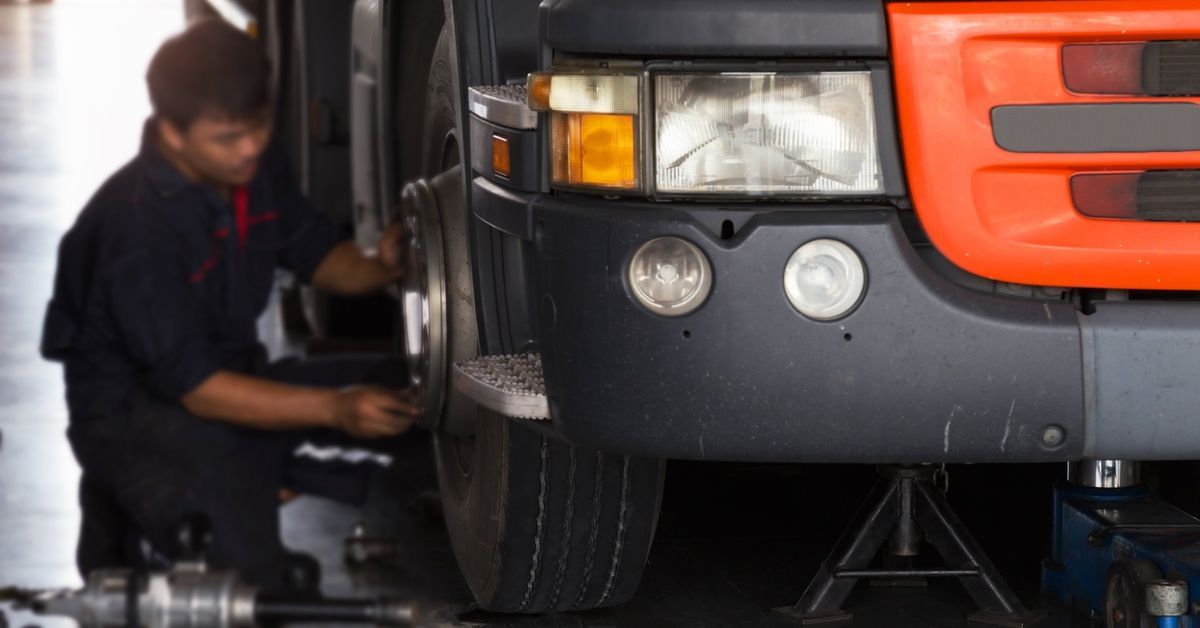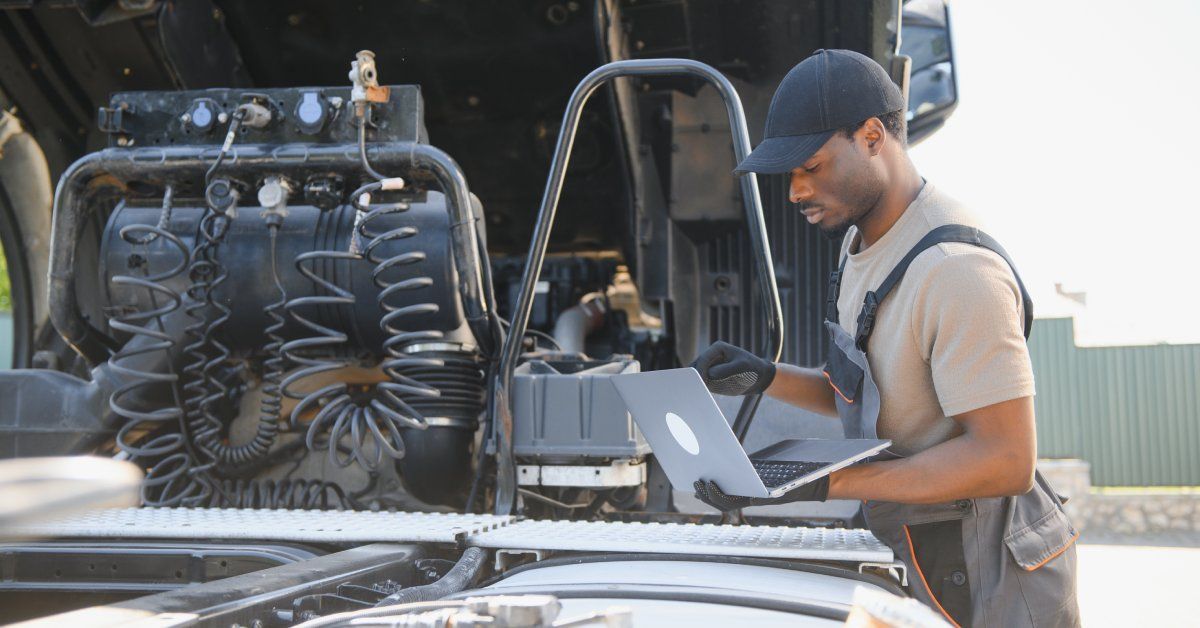Why Fleet Managers Should Prioritize Preventative Repairs
As a fleet manager, you balance hundreds of responsibilities, from scheduling and compliance to driver management and budgeting. And though you may not realize it, one of the most critical aspects of your role is vehicle maintenance. While reactive repairs address immediate breakdowns, a proactive approach centered on preventative maintenance offers a more strategic way to manage your fleet’s health and your company’s bottom line.
This guide explores exactly why fleet managers should prioritize preventative repairs. We will examine how this strategy impacts operational efficiency, financial stability, and overall safety. By understanding the data and adopting a preventative mindset, you can move your fleet from a state of reaction to one of reliable performance.
It’s the Smartest Move Financially
Budgeting for fleet operations is a constant challenge, especially when you know that unexpected repair costs can derail your financial quarter. Preventative maintenance offers a powerful method for controlling these expenditures and achieving greater cost predictability.
Reducing Unforeseen Repair Costs
Breakdowns rarely happen at a convenient time or location. A vehicle that fails on the road incurs expenses far beyond the simple repair itself. These include towing fees, the cost of a mobile mechanic, and potential penalties for late deliveries. Each of these unplanned costs adds up.
A preventative maintenance program systematically addresses potential issues before they escalate into catastrophic failures. By inspecting and servicing vehicles on a set schedule, technicians can catch worn components or developing problems early. For instance, replacing a fraying belt or a weakening hose in the shop is far less expensive than dealing with a complete engine failure on a remote highway.
Extending Vehicle Lifespan

Fleet vehicles are expensive. These are sophisticated, specialized machines that cost a pretty penny to buy. So even though hiring expert technicians to regularly service your fleet is also expensive, it’s far more affordable than replacing an entire semitruck due to postponed repairs that snowballed into failure.
That’s why maximizing the service life of each truck and trailer is essential for achieving a strong return on your fleet investment. Regular, preventative care is one of the most effective ways to extend the operational lifespan of your assets. Consistent fluid changes, lubrication of moving parts, and routine inspections protect critical systems from premature wear and tear. A well-maintained engine, transmission, drivetrain, and other critical parts can operate efficiently for hundreds of thousands of miles longer than neglected components. This extended lifespan delays the need for costly vehicle replacements, freeing up capital for other strategic initiatives.
Improving Fuel Economy
Fuel is one of the largest variable expenses for any fleet. Even small improvements in fuel efficiency can result in substantial savings across dozens or hundreds of vehicles. Well, preventative maintenance plays a direct role in optimizing fuel consumption.
Simple tasks like maintaining proper tire pressure, ensuring clean air filters, and using the correct grade of engine oil all contribute to better mileage. When tires are underinflated, the engine must work harder to move the vehicle, burning more fuel. Similarly, a clogged air filter restricts airflow, leading to an inefficient fuel-air mixture. Regular checks as part of a preventative program make sure these small details are not overlooked.
Better-Performing Vehicles Improve Operational Efficiency
A fleet that runs smoothly is a fleet that is profitable. Breakdowns and unplanned downtime are direct threats to operational efficiency because they cause delays that ripple through your entire logistics chain.
When a vehicle is out of service unexpectedly, the resulting downtime disrupts schedules and might make you lose revenue-generating opportunities. Conversely, you can schedule preventative maintenance during planned, off-peak hours, transforming unpredictable downtime into manageable, scheduled maintenance events.
This approach allows you to keep the maximum number of vehicles on the road during crucial business hours. By methodically servicing your fleet, you create a more reliable and predictable operational flow. Moreover, you can confidently commit to delivery schedules because you know your vehicles are in optimal condition to complete their routes without interruption.
Constant Upkeep Strengthens Safety and Compliance

Beyond the financial and operational benefits, prioritizing preventative maintenance is fundamental to creating a safe work environment and adhering to regulatory standards.
Promoting Driver and Public Safety
A poorly maintained vehicle is a safety hazard. Brake failures, tire blowouts, steering malfunctions, and other wear-related failures can lead to serious accidents that endanger your drivers and the public. A robust preventative maintenance program is your first line of defense against such mechanical failures.
Routine inspections of brakes, tires, steering, and suspension systems identify potential safety issues before they become critical. This commitment to vehicle integrity demonstrates a strong safety culture and protects your company from the liability and reputational damage associated with preventable accidents. There’s also the fact that drivers who trust the condition of their vehicles can focus on operating safely and defensively.
Meeting Regulatory Requirements
The Department of Transportation (DOT) and other regulatory bodies have strict maintenance and inspection requirements for commercial vehicles. Non-compliance can result in hefty fines, out-of-service orders, and damage to your company’s Compliance, Safety, Accountability (CSA) score.
A structured preventative maintenance program helps your fleet stay in compliance with all relevant regulations. Documented service records provide clear evidence of your commitment to safety and maintenance standards during audits. By proactively managing your fleet’s condition, you can avoid violations and maintain a positive safety rating.
Tips for Implementing an Effective Maintenance Program
It should be clear why fleet managers should prioritize preventative repairs, but now the question becomes this: how? Transitioning to a preventative maintenance strategy requires planning and commitment. It begins with establishing a baseline for your fleet’s current condition and creating a detailed service schedule for each vehicle based on manufacturer recommendations, mileage, and operational demands.
We suggest leveraging fleet management software to streamline this process if you’re not already using it. This technology allows you to track maintenance histories, schedule future service, and monitor key performance indicators. Essentially, it provides the data you need to refine your program over time and make it more efficient and effective.
Partner With Trailer Tech
Shifting from a reactive to a preventative maintenance philosophy is a strategic decision that positions your fleet for long-term success. By investing in proactive care, you gain control over your budget, enhance operational reliability, and fortify your commitment to safety.
Claim these benefits today by partnering with a maintenance service provider you can trust: Trailer Tech. We are committed to helping fleets in Texas stay in great shape with expert repair services and a range of semitrailer repair parts. Call us for more information or stop by our shops in Lubbock or Odessa.










